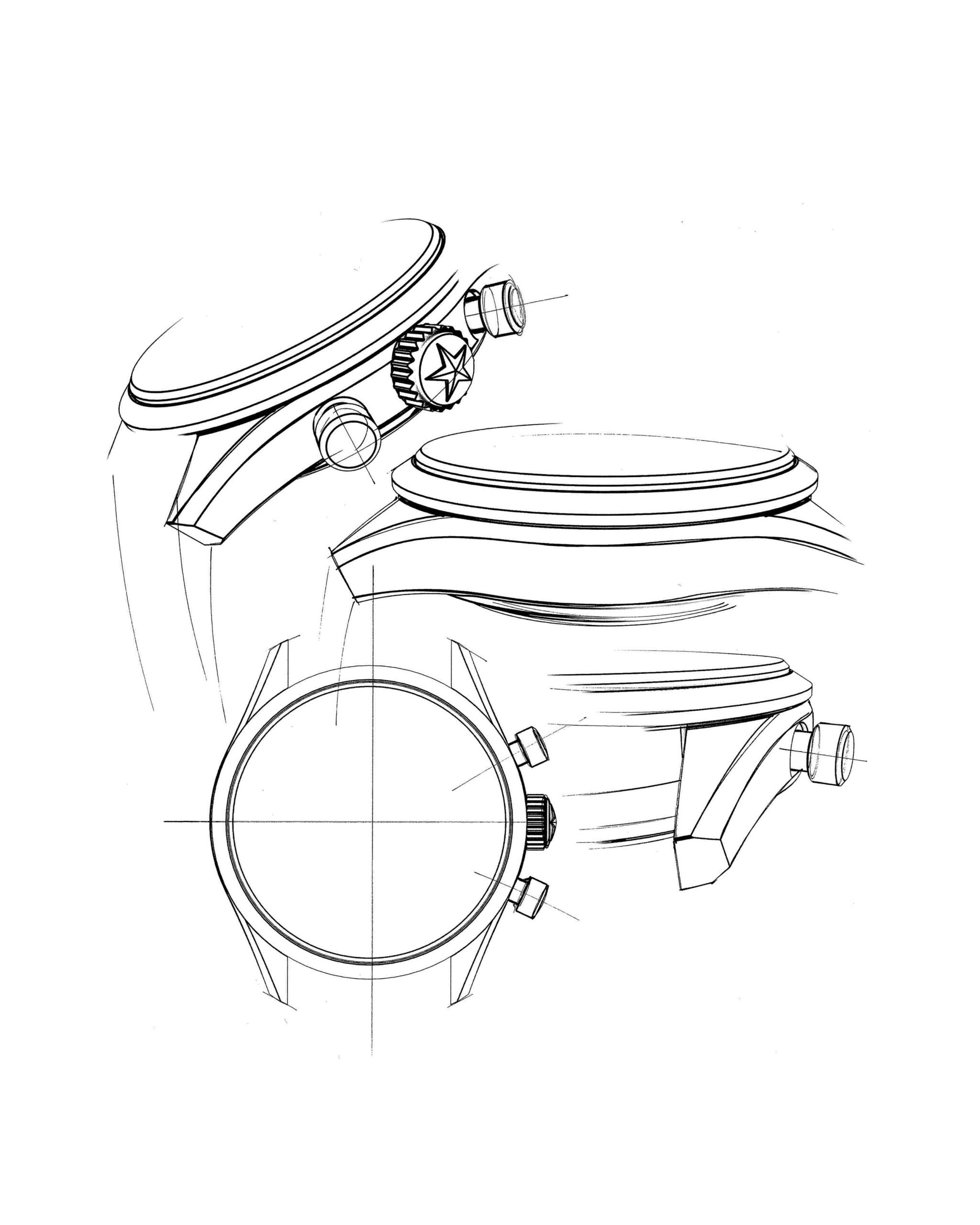
So if I were to ask you to close your eyes and think of a chronograph , you would most likely think of a Zenith watch . Did you imagine a Rolex Daytona? In some ways, you imagined a Zenith, too. We'll see why later.

ZENITH EL PRIMERO, A CHRONOGRAPH WITH AN EXCITING HISTORY
This is not the place to discuss the history and importance of chronographs in watchmaking: the chronograph is one of the oldest and most used functions ever, that any watchmaker, brand or movement manufacturer has implemented and refined. Zenith 's contribution is relatively recent, but it has had a fundamental impact. The initial context is that of the 60s, when watches were still effectively tools whose precision and functionality determined their success as well as actively contributing to the life of those who wore them. A bit like the smartphone from which you are reading this article today.
In 1962, Zenith launched an extremely ambitious project: to build the first automatic chronograph in history , which would also be the most precise. Let's be clear, what today sounds like an obvious thing was science fiction at the time: there were few automatic watches in circulation and the chronograph was a highly developed and precise complication, but constantly in balance between precision and durability. To make a long story short, imagine today having to design a foldable, ultra-thin, solar-powered smartphone. There you go.

Let's go back to the 60s: the complexity of the project and the desire to also include the date in the mechanism without compromising the brand's design and wearability criteria, meant that when it was launched on the market in 1969, El Primero - a name that gives an idea - was not the first automatic chronograph in history. However, I challenge anyone to remember the two watches that chronologically "beat" it: El Primero, despite having come in third, had a finish and quality that, over half a century later, still make enthusiasts' eyes light up.
El Primero A386 condensed into a 38 mm case an integrated and automatic chronograph mechanism that oscillated at a frequency significantly higher than the market standard ; precise, compact and with an extremely legible dial with three chromatically scaled and slightly overlapping counters. The conquest of time took a further step forward. A huge success, you might say: yes and no.

THE WATCHMAKER WHO SAVED EL PRIMERO
The Seventies saw the advent of quartz and the crisis of mechanics: previously unimagined levels of precision were achievable thanks to a very expensive industrial precision oscillator but with incredible economies of scale, capable of making almost all the levels of precision achieved up until then seem prehistoric.
Swiss mechanical watchmaking is gently but surely landing like the Titanic against an iceberg, and Zenith's new U.S. ownership believes that pursuing digital instrumentation is more profitable than producing mechanical watches, and essentially orders a complete dismantling.

Without going into too much detail, legend has it that a watchmaker named Charles Vermot – a staunch supporter of the new mechanical creature – hid the plans for El Primero in an attic, thus saving them from total purge and preserving them for the future. The attic still exists and is part of the current Zenith manufacture, Charles Vermot really existed and so a bit of watchmaking romanticism is more than allowed and we like to imagine this sort of Indiana Jones of Le Locle who, with a partisan attitude, hides plans in the dead of night.
In short, quartz was indeed a success, because after centuries, man had achieved the goal he had always pursued: to measure time with extreme precision. But being a man and not a robot, he soon realized that the price paid was the loss of the magic generated by mechanics and that the mechanical ticking, although less precise, was more fascinating than the infallible buzz of quartz.
Vermot's attic was thus transformed into the horological equivalent of Tutankhamun's tomb: El Primero was reborn and over the years it was developed in numerous variations and forms without ever compromising its technical characteristics of precision. So much so that Rolex itself, before developing its own in-house version, chose this mechanism for years to power the Daytona's performance, something that is still appreciated and sought after by collectors today.
Let's go back to Zenith . Among the various versions of the El Primero , there was also the skeletonized version . Skeletonization in watchmaking is a risky step to say the least: it's one thing to make a beautiful dial, it's another to proudly reveal what's underneath. A sort of watchmaking costume test, so to speak.

As an alternative to skeletonization, in 2003 Zenith introduced the Chronomaster Open , aiming to make the high-frequency beating heart of its El Primero caliber as visible as possible. For the first time in the history of watchmaking , a chronograph featured a dial partially open solely to reveal the regulating organ and escapement. The Chronomaster Open was an immediate success, appreciated for its bold design, which still challenges the eye of the observer accustomed to seeing a complete skeletonization or in some cases a tourbillon.

ZENITH EL PRIMERO TODAY
After almost twenty years, Zenith presented the new Chronomaster Open at Watches & Wonders 2022 .
With the introduction in 2021 of the new updated version of the El Primero 3600 , boasting a chronograph function with 1/10th of a second readability and improved efficiency, the time had come to adapt and introduce the latest innovations for the iconic Chronomaster Open. Much more than a simple renewal, the new Chronomaster Open features the lines and features of the latest generation of the Chronomaster collection . A fusion of the sporty elegance of the Chronomaster Sport and the historical inspiration of the Chronomaster Original, for a modern interpretation of Zenith's iconic El Primero chronograph .
Revisiting the iconic A386’s tri-colour dial configuration, the latest iteration of the Chronomaster Open fully retains this feature, adding a transparent touch. Unlike the previous version, where the small seconds counter at 9 o’clock was completely eliminated, the three colours of the counters are retained here thanks to a hesalite crystal element that acts as a legible counter, offering a glimpse of the star-shaped silicon escape wheel. The aperture itself has also been revisited: the applied edge of the previous version has been replaced with circular apertures with chamfered edges that reveal the movement equipped with straighter bridges and a more contemporary grey tone.

In response to recent demand for watches with more modest proportions, the round case now measures 39.5mm compared to the previous 42mm model, with thinner lugs and windows featuring more pronounced polishing on the edges. The pump pushers now feature rounded tips for a more ergonomic touch. All available in either steel with two dial combinations and a strap or bracelet, or in rose gold with a strap and a white dial.
Visible through the sapphire crystal caseback, the El Primero 3604 automatic chronograph movement with 1/10th of a second accuracy is a modified version of the 3600 found in the Chronomaster Sport , featuring an open-base mainplate and bridges that provide a clearer view of the 5Hz high-frequency escapement, with its silicon escape wheel and pallet fork that require no lubrication. The automatic winding mechanism with an open star-shaped oscillating weight ensures an efficient 60-hour power reserve.
Few watches manage to blend mechanics, style, precision, modernity and wearability in one fell swoop like the new Chronomaster Open. Charles Vermot would certainly be satisfied.

